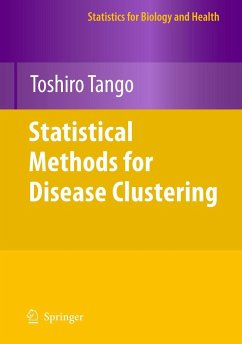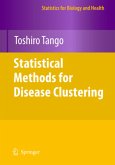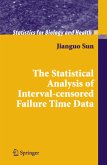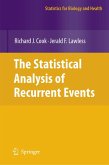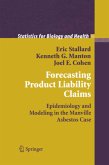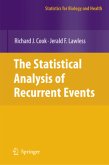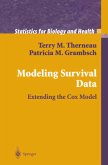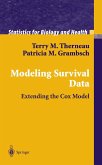The development of powerful computing environment and the geographical information system (GIS) in recent decades has thrust the analysis of geo-referenced disease incidence data into the mainstream of spatial epidemiology. This book offers a modern perspective on statistical methods for detecting disease clustering, an indispensable procedure to find a statistical evidence on aetiology of the disease under study.
With increasing public health concerns about environmental risks, the need for sophisticated methods for analyzing spatial health events is immediate. Furthermore, the research area of statistical methods for disease clustering now attracts a wide audience due to the perceived need to implement wide-ranging monitoring systems to detect possible health-related events such as the occurrence of the severe acute respiratory syndrome (SARS), pandemic influenza and bioterrorism.
As an invaluable resource for a wide range of audience including public health researchers, epidemiologists and biostatistians, this book features:
- A concise introduction to basic concepts of disease clustering/clusters
- A historical overview of methods for disease clustering
- A detailed treatment of selected methods useful for practical investigation of disease clustering
- Analysis and illustration of methods for a variety of real data sets.
This book is intended to provide a text on statistical methods for detecting clus ters and/or clustering of health events that is of interest to ?nal year undergraduate and graduate level statistics, biostatistics, epidemiology, and geography students but will also be of relevance to public health practitioners, statisticians, biostatisticians, epidemiologists, medical geographers, human geographers, environmental scien tists, and ecologists. Prerequisites are introductory biostatistics and epidemiology courses. With increasing public health concerns about environmental risks, the need for sophisticated methods for analyzing spatial health events is immediate. Further more, the research area of statistical tests for disease clustering now attracts a wide audience due to the perceived need to implement wide ranging monitoring systems to detect possible health related bioterrorism activity. With this background and the development of the geographical information system (GIS), the analysis of disease clustering of health events has seen considerable development over the last decade. Therefore, several excellent books on spatial epidemiology and statistics have re cently been published. However, it seems to me that there is no other book solely focusing on statistical methods for disease clustering. I hope that readers will ?nd this book useful and interesting as an introduction to the subject.
With increasing public health concerns about environmental risks, the need for sophisticated methods for analyzing spatial health events is immediate. Furthermore, the research area of statistical methods for disease clustering now attracts a wide audience due to the perceived need to implement wide-ranging monitoring systems to detect possible health-related events such as the occurrence of the severe acute respiratory syndrome (SARS), pandemic influenza and bioterrorism.
As an invaluable resource for a wide range of audience including public health researchers, epidemiologists and biostatistians, this book features:
- A concise introduction to basic concepts of disease clustering/clusters
- A historical overview of methods for disease clustering
- A detailed treatment of selected methods useful for practical investigation of disease clustering
- Analysis and illustration of methods for a variety of real data sets.
This book is intended to provide a text on statistical methods for detecting clus ters and/or clustering of health events that is of interest to ?nal year undergraduate and graduate level statistics, biostatistics, epidemiology, and geography students but will also be of relevance to public health practitioners, statisticians, biostatisticians, epidemiologists, medical geographers, human geographers, environmental scien tists, and ecologists. Prerequisites are introductory biostatistics and epidemiology courses. With increasing public health concerns about environmental risks, the need for sophisticated methods for analyzing spatial health events is immediate. Further more, the research area of statistical tests for disease clustering now attracts a wide audience due to the perceived need to implement wide ranging monitoring systems to detect possible health related bioterrorism activity. With this background and the development of the geographical information system (GIS), the analysis of disease clustering of health events has seen considerable development over the last decade. Therefore, several excellent books on spatial epidemiology and statistics have re cently been published. However, it seems to me that there is no other book solely focusing on statistical methods for disease clustering. I hope that readers will ?nd this book useful and interesting as an introduction to the subject.
From the reviews:
"There is an increasing awareness nowadays of environmental health risks, including bioterrorism, together with the development of modern data collection systems. This combination provides a major impetus for the sorts of studies described in this book. ... Overall, the book is very practically oriented. ... The explanations of the methods are very clear and detailed and the discussion is informative. ... the book will be of good use to the novice coming into the subject and also for the initiated wishing to broaden their perspective." (Martin Crowder, International Statistical Review, Vol. 79 (2), 2011)
"The first introductory chapter informs the reader about the basic classification of disease clustering (temporal clustering, spatial clustering, and space-time clustering), the data used in examples, and software (like R, SaTScan, FleXScan, Splancs). ... The suitable audience are experts' communities either in the medical field or in the mathematical modeling field with the focus on data mining and clustering." (Adriana Hornikova, Technometrics, Vol. 53 (2), May, 2011)
"There is an increasing awareness nowadays of environmental health risks, including bioterrorism, together with the development of modern data collection systems. This combination provides a major impetus for the sorts of studies described in this book. ... Overall, the book is very practically oriented. ... The explanations of the methods are very clear and detailed and the discussion is informative. ... the book will be of good use to the novice coming into the subject and also for the initiated wishing to broaden their perspective." (Martin Crowder, International Statistical Review, Vol. 79 (2), 2011)
"The first introductory chapter informs the reader about the basic classification of disease clustering (temporal clustering, spatial clustering, and space-time clustering), the data used in examples, and software (like R, SaTScan, FleXScan, Splancs). ... The suitable audience are experts' communities either in the medical field or in the mathematical modeling field with the focus on data mining and clustering." (Adriana Hornikova, Technometrics, Vol. 53 (2), May, 2011)

